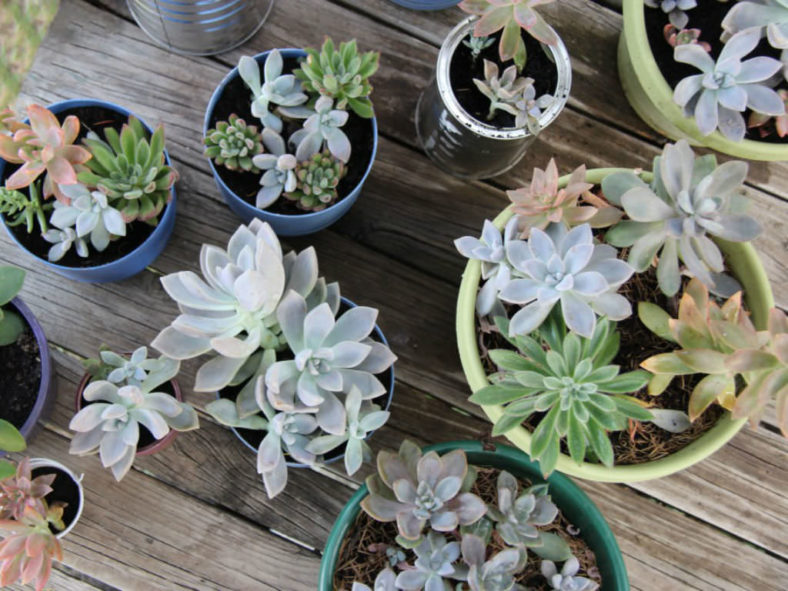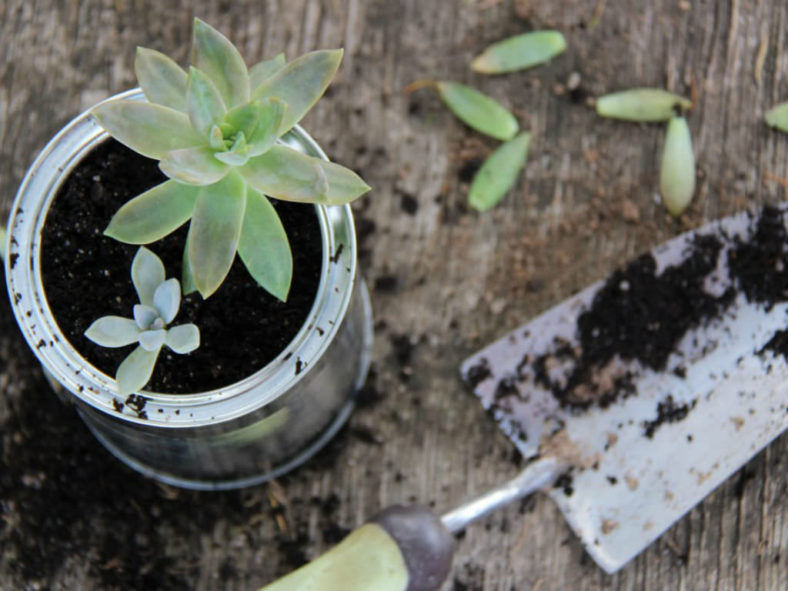Succulents are among the easiest plants to propagate, mainly because they have a strong sense of self-preservation. These plants root with little encouragement from you, and new plants can be grown from existing ones. You can even ignore the cuttings for weeks, and the plants will be fine.
Gardening trends come and go, but the popularity of succulents has been going strong for quite some time. It is understandable. They require little supplemental water and endure benign neglect. In addition, they can be grown indoors if you have sufficient light and can be used as temporary decor, such as for place settings, and then added to your collection.
The plants can also be quite beautiful, and their unique sizes, colors, and forms make them favorites.
General Care
Knowing how much to water your succulents is mostly trial and error. Most die from getting too much water, but if you notice the plant's bottom leaves starting to shrivel, that is a sign the plant is not getting enough water. Allow the soil to dry between waterings.

Some succulents need full sun to develop color, but most appreciate some afternoon shade. If there are wide spaces between leaves, the plant is not getting enough light. Burns on the leaves may indicate that it is getting too much sun.
Many succulents are frost-tender. To help protect them during the winter, you can bring them indoors or place them beneath a tree or close to the house. Covering them with a protective cloth or putting old-fashioned Christmas lights around them can also help them survive freezing temperatures.
If you have the right soil, succulents grow well in pots but will do even better in the ground. They need soil that drains well. Use commercial soil mixes for succulents, or create your own by combining perlite and sand with standard potting soil.
All plants need fertilizer, especially those in pots, but they will survive without it. They may not be as robust, but they will survive.
If you are worried about certain plants being lost to winter frost, take cuttings from them in the fall and grow them indoors until spring. You may lose your outdoor plant, but you will have something to replace it.
Propagation
Most succulents can be propagated by cuttings or leaves.
Simply snip off a piece of the plant and set it aside in a shady place. Let it rest for a few days to harden off, allowing the freshly cut end to callous over. Then pop it in a pot or on the ground and water. Cuttings can be left for a week before planting.

Remove the entire leaf and set it aside in a shady spot. In about three weeks, roots will form on the leaf, and a new plant will develop at the base.
Succulents can be rooted in water, but most will rot rather than develop roots. Nothing can be gained because they are so easy to root out of the water.
Source: mercurynews.com
Links
- Succupedia: Browse succulents by Scientific Name, Common Name, Genus, Family, USDA Hardiness Zone, Origin, or cacti by Genus